WARNING: This post contains extremely lightweight spoilers about Fallout 4. I describe a few clusters of objects that I wandered across, among the many thousands to be found. I won’t reveal anything about the game or characters beyond what’s on the TV ads.
In Fallout 4, you’re wandering Massachusetts after a nuclear war. The world is essentially depopulated except for a few bands of survivors. As you explore the abandoned cities and buildings, there are endless everyday objects lying around that scavengers haven’t yet claimed: broken coffee pots, empty cans, plastic forks, and so on. Most of this stuff is broken junk; you can scavenge it or ignore it.
Every now and then I a bunch of junk suddenly snaps together into a story for me. I think that these are deliberately staged still lifes, and they’re lovely. It’s simply wonderful to be running around an abandoned environment, and stumble into a poignant moment in the midst of dust and ruin. Here are three of my favorites so far:
* A nursery. Four cribs, empty. A changing table, piled with blankets. Against one wall, facing the cribs, a chair. Next to the chair, a low table. On the table, an ashtray. And next to it, a bottle of whiskey. And a shot glass.
* A bathroom. On the floor, in front of a sink, are the skeletal remains of a right hand. And a left hand. And lying between them, a pair of handcuffs.
* A hotel room. A man in decaying clothes is lying on a bed. His skeletal right arm is falling off the bed, the bones of his right hand resting on the floor. Next to his hand, a syringe with the last bits of a psychoactive drug. Next to him on the bed, a female mannequin. She is naked, her plastic legs still attached to her wide circular base in a standing pose. But he’s placed her lying on the bed next to him, face up. His left arm is wrapped around her.
These are just a few of the beautiful still lifes I’ve discovered. I’m very impressed by the skill with which these were assembled, they depth of the stories they communicate so eloquently, and the casual way they were included as tiny and unremarkable details in the midst of an enormous game. It would be very easy to miss these scenes, or just move past them quickly. But each time I find one of these gems, I see a glimpse of the long-gone person behind the objects, and a moment from their story. It’s beautifully done.
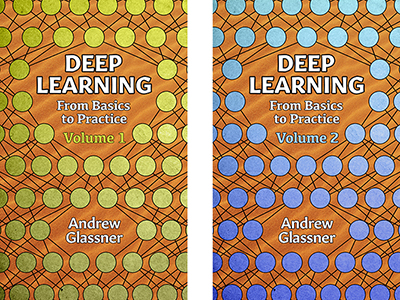 My deep learning books are published!
My deep learning books are published!
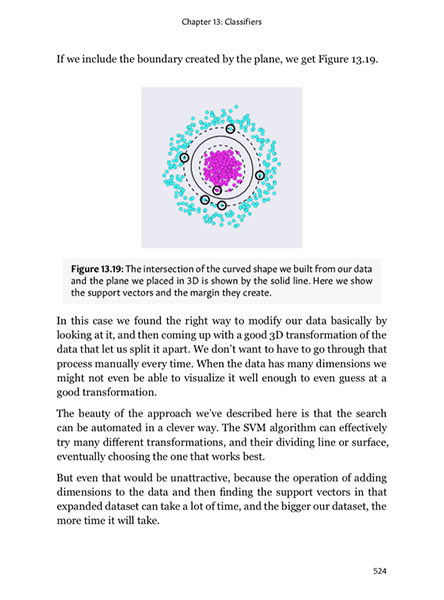
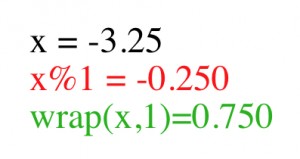 The modulo operator % is great when everything is positive. But when your input value goes negative, the values it returns can be a big surprise.
The modulo operator % is great when everything is positive. But when your input value goes negative, the values it returns can be a big surprise. In a previous post, I complained that a game I was playing should have adapted the difficulty level of a mission after I’d failed it many times. I know, of course, that building in such smarts would require significant effort. I was wondering about how to make the process easier, and then I realized we already have the answer: the difficulty setting. That’s the slider or check boxes we often see at the start of a game that ask us if we want it set to “easy,” “medium,” or “hard.”
In a previous post, I complained that a game I was playing should have adapted the difficulty level of a mission after I’d failed it many times. I know, of course, that building in such smarts would require significant effort. I was wondering about how to make the process easier, and then I realized we already have the answer: the difficulty setting. That’s the slider or check boxes we often see at the start of a game that ask us if we want it set to “easy,” “medium,” or “hard.” “Hello, player! You’ve failed at finishing this task within our time limit ten times in a row now. Are you still having fun? If yes, press A and keep trying. Otherwise, press B and we’ll remove the time limit. Or press X just to mark this as done and move on in the game.”
“Hello, player! You’ve failed at finishing this task within our time limit ten times in a row now. Are you still having fun? If yes, press A and keep trying. Otherwise, press B and we’ll remove the time limit. Or press X just to mark this as done and move on in the game.”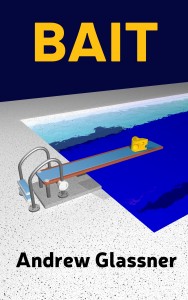
 I’ve just released version 2 of my Andrew’s Utilities Library for Processing!
I’ve just released version 2 of my Andrew’s Utilities Library for Processing!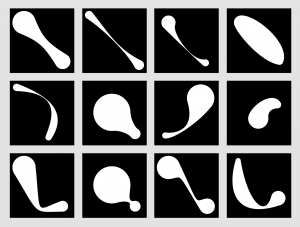 I’ve cooked up a cool new 2D geometric primitive. I call it a glob. The idea is that we can join any two circles with a smooth, curvy, controllable neck.
I’ve cooked up a cool new 2D geometric primitive. I call it a glob. The idea is that we can join any two circles with a smooth, curvy, controllable neck. 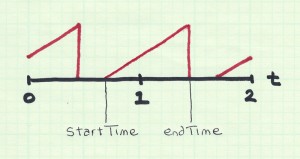 I’ve been making and sharing animated loops on
I’ve been making and sharing animated loops on